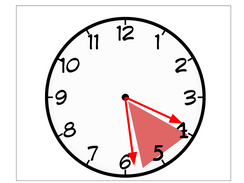Rose basketball highlights
Adolescence sparks social media controversy
Sat.| 5-10-25 | ENTERTAINMENT
“Adolescence,” released on March 13, is not your average Netflix crime drama. Even a month and a half after its initial release, it has stood the test of time, charting as one of the most streamed series of 2025 and sparking dialogue on childhood social media use all across the world. This series follows the case of Jamie Miller, a 13-year-old boy accused of murdering his female classmate Katie Leonard. While the plot seems relatively simple at first, as the case unravels through the four episodes, each an hour long, this show proves to be a complex emotional rollercoaster that isn’t for the faint of heart, yet holds significant value in today’s social media driven society.
Episode one quickly sets the stage for the series, opening with the British police force breaking into the Miller’s home to arrest Jamie. The complete chaos of the situation and the emotions felt by Jamie and his family create a sense of remorse within the viewer. Throughout this segment, I found myself feeling as though the police were mistreating him, and it had me questioning what proof they could possibly have to use such force and cast accusations of murder. As the episode moves into the interrogation room, it becomes clear that the police have substantial evidence against Jamie. Finally, the episode concludes with the detective showing Jamie, his father and his attorney surveillance footage of the murder, clearly displaying Jamie committing this heinous act.

The twist of emotions created in this first episode is something that “Adolescence” does extremely well throughout the series. Even after it is made clear Jamie is guilty, the knot in my stomach about the situation only tightened more. On one hand, you see evidence that Jamie committed the murder he was accused of, but on the other, you see the devastation of his family and the youth of Jamie. Coupled with the foremost sense of remorse I had for the victim, this episode left me with an underlying sense of sadness and confusion as to how this young boy from a good family could possibly commit such an act.
Following this introduction to the plot, the rest of the show takes a slower approach. Each episode after this revolves around the three different parties showcased in the initial arrest. The following episode focuses on the detective looking into Jamie’s school to find more information about the investigation. Through this, the detective learns that Katie was cyberbullying Jamie by calling him an incel, using language and obscure emojis that only the kids understand. Even though this helped my understanding of the facts that led up to the crime, I felt that the main purpose of this episode was to showcase the generational divide between kids nowadays and adults. For children of today, online interactions can be just as impactful as in person socialization, which is extremely evident in this case.
Episode three dives into the psyche of Jamie through a one-on-one interview with his therapist. With her knowledge about the incel allegations as established in the previous episode, she is able to uncover a different side to Jamie. This episode makes it clear that Jamie has a harmful and skewed attitude towards women, which seems to be consistent with his motivation to commit the crime. One of my biggest takeaways from this episode is that it highlights the dangers of spreading toxic masculinity online. While this is a fictional show, in the real world there is an increasing number of male influencers who encourage hateful and outdated attitudes surrounding women to their young impressionable audience. While “Adolescence” is an extreme case relating to the dangers of this way of thought, it still effectively shows how harmful this ideology can truly be.
The final episode surrounds Jamie’s family, struggling with his incarceration and the publicity of his crime. This showcases the emotional climax of the show when Jamie calls to inform them that he is changing his plea to guilty. Even though his father saw the footage of the murder, it is clear that this was an emotional breaking point for him and the rest of the family. In the final part of the episode, Jamie’s parents have a discussion about whether or not it was their fault for not checking up on him more and monitoring his computer use. Aside from being extremely sad, the way the writers chose to end the series is why I believe it is still relevant several weeks after its release. Seeing the parents deal with this situation sparked a real-world conversation about how to deal with internet use in developing children with the clear dangers it poses.
With only four episodes total, “Adolescence” was able to create a ripple in society unlike any other. From the use of a one-shot style of filming to make each scene more realistic, to the frequent references to current issues facing all of us, it is clear that everything the writers have accomplished was intentional. Overall, I would recommend this show, but not as a casual watch. While it was entertaining, I encourage you to focus on the underlying themes of this series, as it covers several modern issues that will continue to be relevant in the future.




















